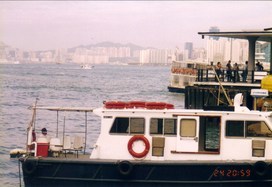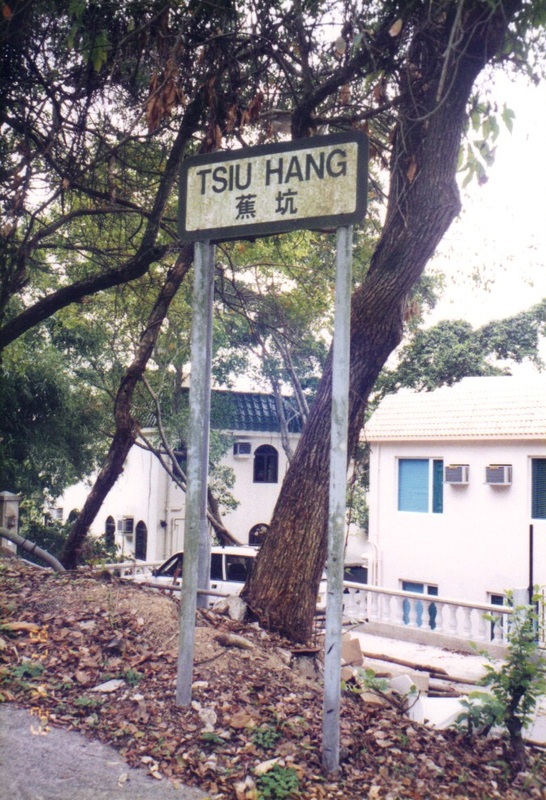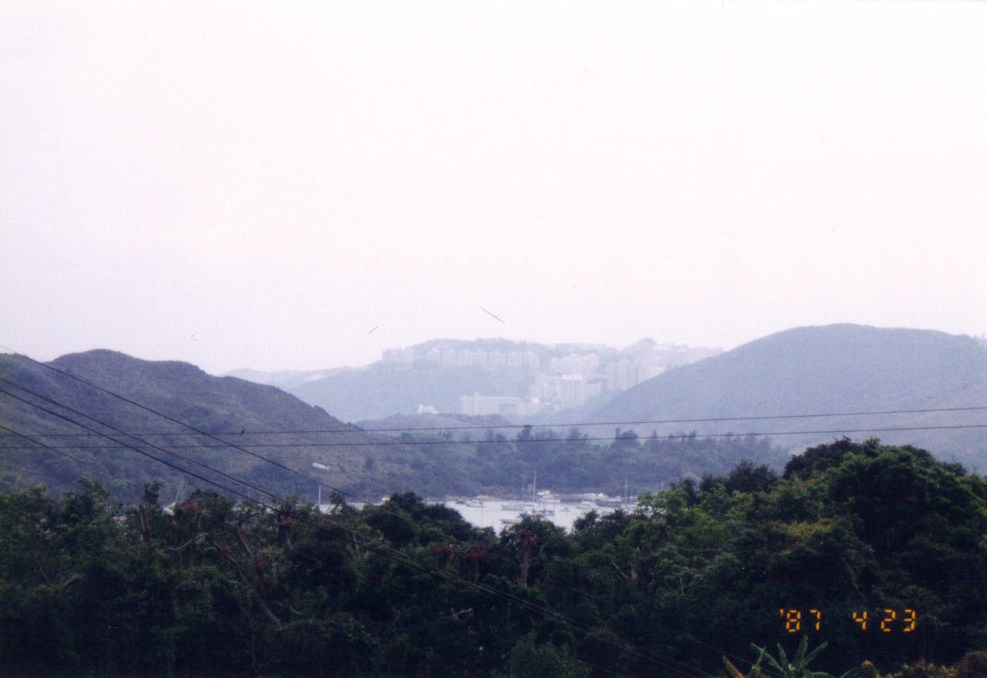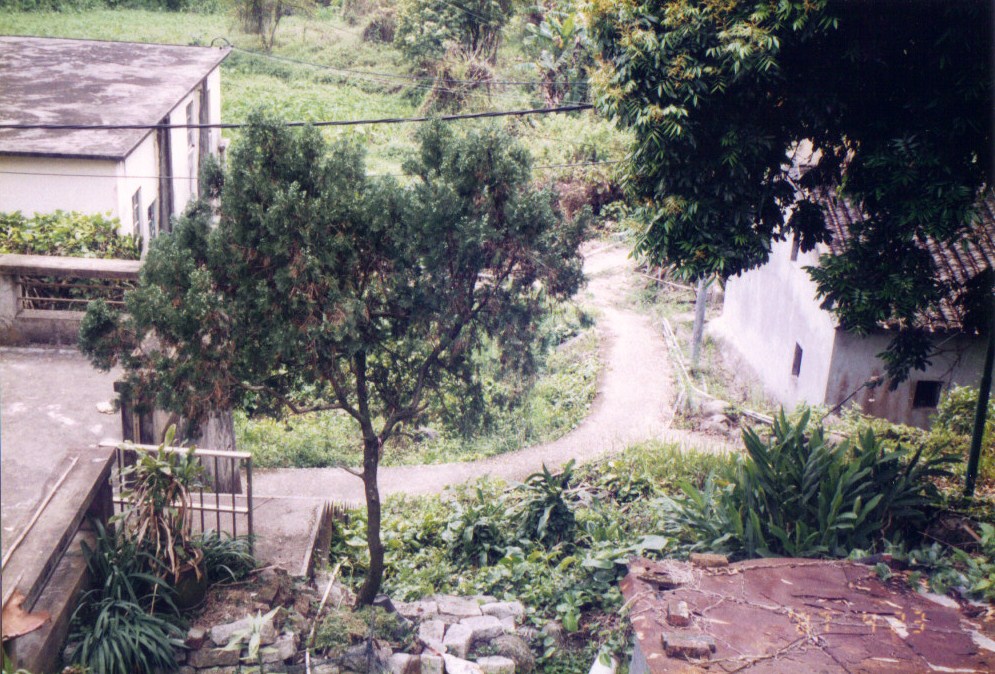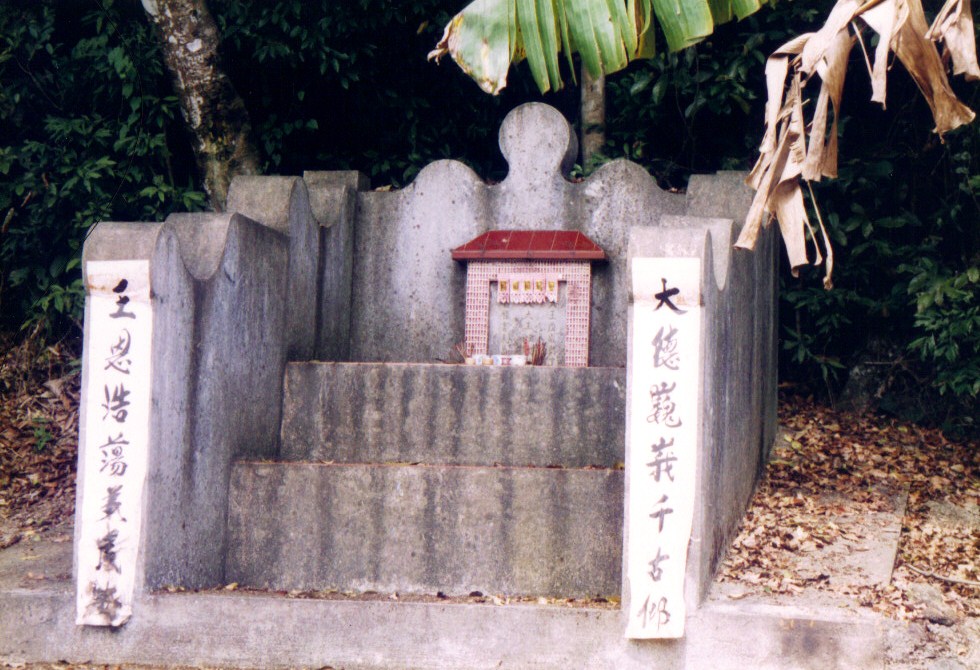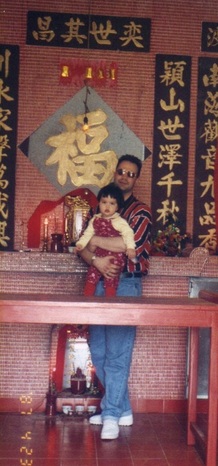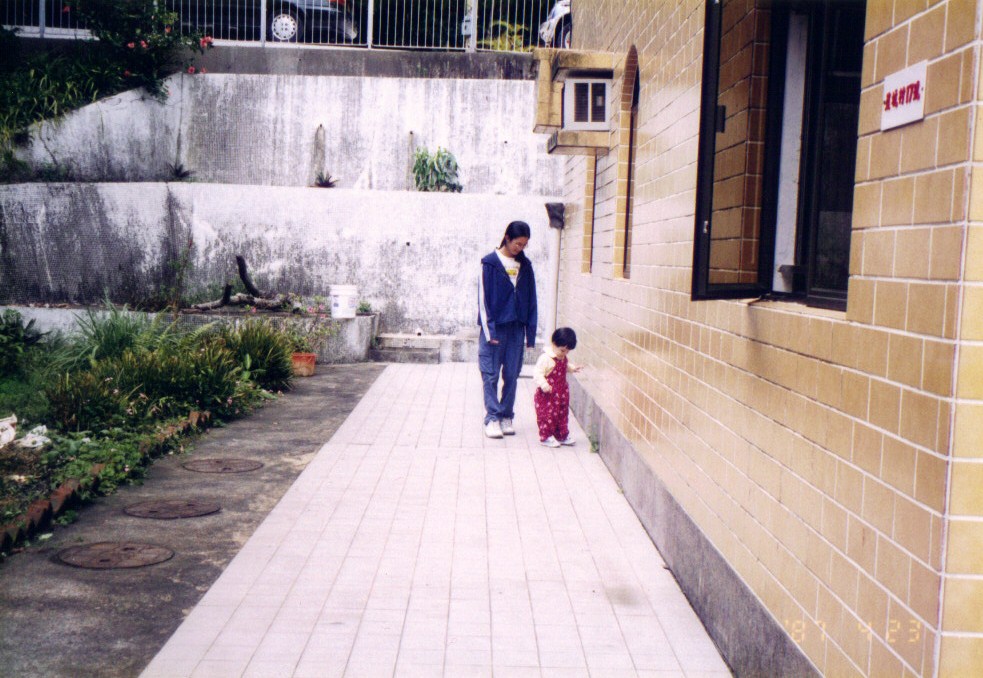Banana Village (香蕉村) Hong Kong Island, looking towards Kowloon
Banana Village - 香蕉村 – is pronounced Xiang Jiao Cun in Manderin; Heurng Jou Chin in Cantonese, and Nyah Jou Chin in Hakka. These photographs are from the last official visit of the UK Chan Clan to their ancestral home - Banana Village - in 1999. Banana Villageis the spiritual home of Ch’an Dao Martial Arts (also known as Chan Gar). Hakka people have occupied the site of this village for around 500 years and perhaps longer. The older Hakka people of the village speak of between 11 and 16 generations for the Chan (陳) ancestral name, and that the original settlers migrated from Central China – possibly Henan. The village is situated on the top of a hill within a wooded valley that looks out onto the sea. The earliest layer of settlement – now in ruins and over-grown, lies at the base of the hill. Small houses, made from mud and stone have fallen into disrepair following their occupants moving up to the central part of the hill to re-build their homes using brick and cement. It is this middle-hill settlement that Grand Master Chan Tin Sang and his family used to live in, before migrating to the UK in 1956.
The food stove is often outside the house due to the heat and moisture generated by the cooking process. Each house has a small garden space carefully marked off. This garden is comprised of a flattened earth area and is used to give the inhabitants of the house a little more room. The houses and the different parts of the village are connected by dirt tracks that wind around the buildings. Opposite a forested area is a stone shrine that looks like a throne. This honours the tree spirits and the Chan family name. The latest layer of the village lies on the top of the hill. The houses here are very modern. In 1999, there were only six inhabitants left in the village and the clan leader was a woman in her 80’s. Grand Master Chan Tin Sang’s family use to be the clan leaders until they migrated to the UK – where they established a new branch. Recently, we received a report in the UK that the last of the villagers had died, and that the village itself had been demolished so that the land could be used to build a hotel.
|
